It was time for a new laptop slipcase – which also doubles as a table mat – and you can make one too with this step-by-step tutorial.
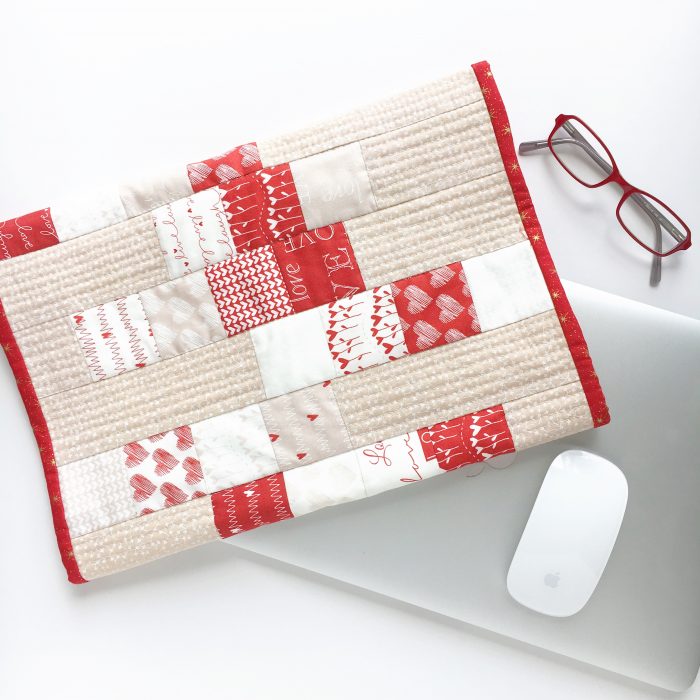
One of the best things about using my laptop as my only computer is the portability and convenience. When I used to use a desktop, I could only work at my desk, but these days I work anywhere. My laptop computer often starts the day near my couch, goes to work with me, spends time at tennis lessons and dance rehearsals, and ends the day on my standing desk. With the help of my portable wifi box or my iPhone, I can access the internet anywhere and do a little more on my blog whenever I get the chance. I work on a 15″ Apple Macbook Pro – in case you’re curious.
With all this moving around, I need to protect my laptop with a case. My daughter has the ultimate protective case for school – a Targus T.A.N.C. – but I’m pretty careful so I have a lovely red briefcase – similar to this one – for outside the house and a slipcase that doubles as a table mat. I made a slipcase a few years ago from a jelly roll set but it was time for an update. This time I used the cutest LOVE mini charm square pack plus some extra fabric from my stash to create a LOVELY new cover. (Sorry, couldn’t resist the pun!)
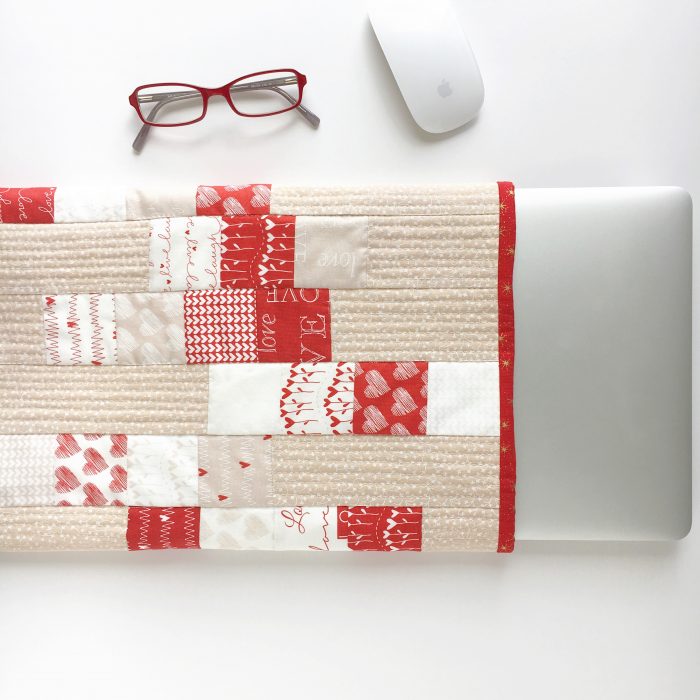
What You Need
- Fabric for the patchwork – see note below about calculating the size – I used a mini charm square pack and a fat quarter of extra fabric to create 11 x 2.5″ strips
- Backing fabric – I used flannel so it is soft and adds a little more thickness – 23″ x 15″ or the same as your patchwork piece
- Iron on pellon or quilt batting – 23″ x 15″ or the same as your patchwork piece
- Fabric for binding – two strips 2.5″ x 28″ (my 23″ computer girth plus some extra for overlapping.)
- Usual sewing supplies
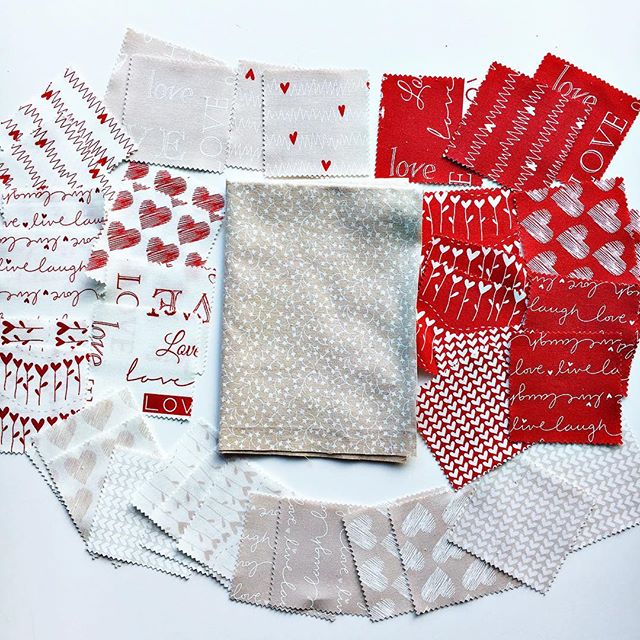
A note about fabric for the patchwork
Your slipcase sizing will depend on your computer.
Measure the width across your laptop and add 1″. My computer measurement is 14″ so my fabric measurement is 15″.
Wrap your tape measure around your closed laptop to find a girth measurement. Add 2.5″ for overlap. My computer measurement is 20.5″ so my fabric measurement is 23″.
My outer fabric needs to be 23″ x 15″.
You could easily make this slipcase with a single piece of fabric rather than a pieced patchwork outer layer.
Or you could make it with eleven 2.5″ x 15″ jelly roll strips. (Add more strips if your girth measurement is greater than 23″.)
Or you could create the 2.5″ strips using a mini charm square pack (2.5″ x 2.5″ squares) and some extra fabric.
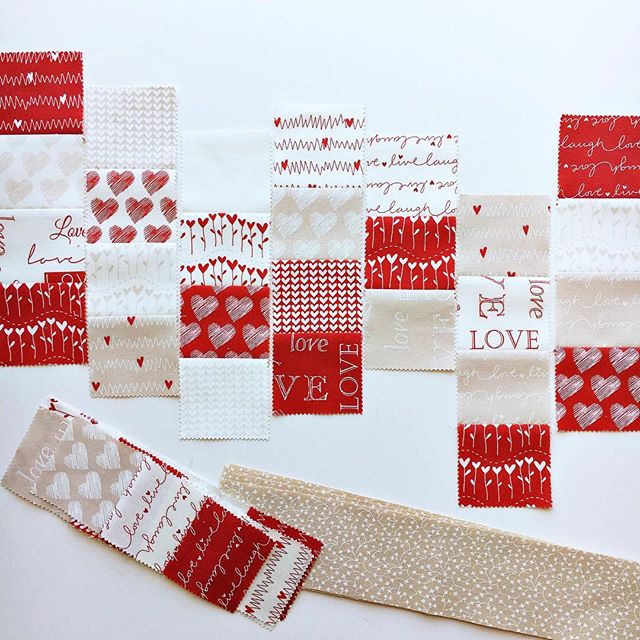
What To Do
Piecing:
First, we need to piece the outer patchwork piece.
If you’re are using a single piece of fabric for this, you’re all set to go on to the basting and quilting step below.
If you’re using jelly roll strips, trim them to 15″ long (or your width measurement), then join 11 strips (or enough for your girth measurement), pressing the seams to one side as you go. You can see my original slipcase using jelly roll strips in the photo below.
If you’re using mini charm squares:
Start by dividing them into 11 groups of 3 or 4. (If your girth measurement is more than 23″ then you will need more than 11 groups.) I tried to mix the patterns by laying them out on my cutting mat. I also thought about which sets would sit beside each other in the finished strips so I didn’t have the same patterns next to each other. Join the sets into mini strips, pressing the seams as you go. I pressed mine all to the same side but you could press them open if you prefer. I used quarter-inch seams.
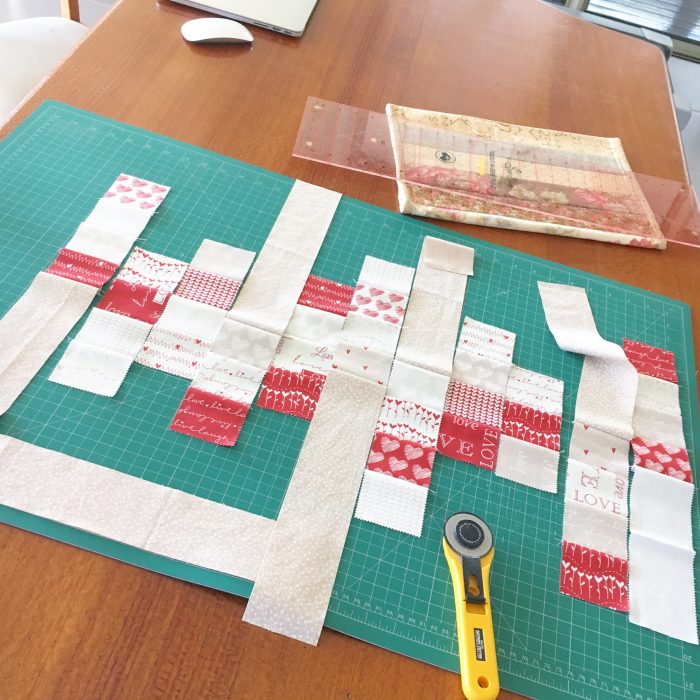
Lay out all the mini strip sets on your mat and decide where you want them to line up. I wanted a sort of staggered line. I used a line on my cutting mat as the top line of my 15″ pieces and then another line as the lower end of the 15″ strips – 15″ away obviously. Some sets were against one or other of the lines, while others fell somewhere in the middle.
Next, we need to make all these sets into 15″ strips. I cut my fat quarter of background fabric into 2.5″ strips. I started by joining background strips to the mini strip sets that were against the ends of my 15″ line as they needed the biggest background strips added. I joined a background strip then trimmed the excess down to 15″. After joining the strips that needed the largest background additions, I went back and used the offcuts to add background to both ends of the other mini strips until all my strips were 15″ long. Press all the strips as you go along to make sure your measuring is accurate.
Finally join all the strips together to create a patchwork piece that is 23″ x 15″ (or your custom measurement).
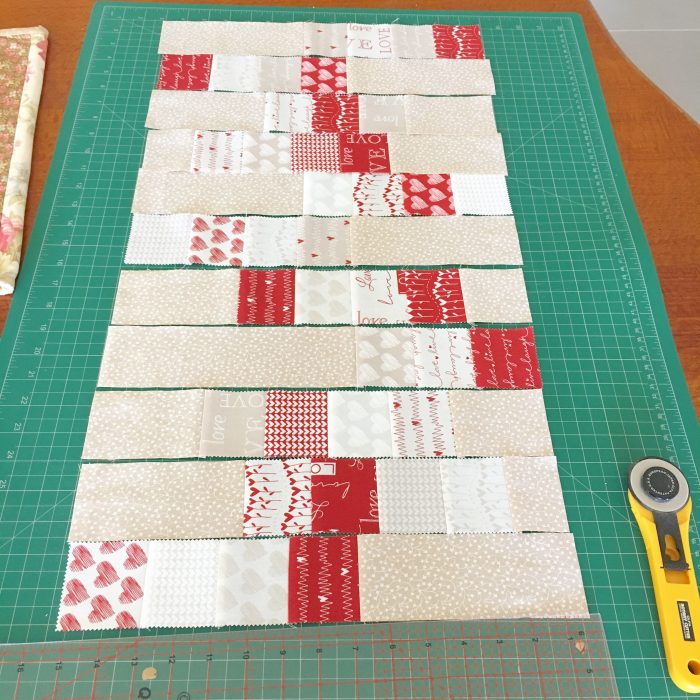
Basting & Quilting:
Next baste your patchwork top, batting or pellon, and backing piece together.
This is just like basting a mini quilt! Read more about how to do that easily and quickly with spray basting here.
Then it is time to quilt. This is just joining the three layers together with stitching.
I started by stitching along all the strip joins in the seam line. This is called stitching “in the ditch”. Then I added some simple straight line quilting on the background areas. This is simple with a walking foot. Learn more about quilting with a walking foot in this Creativebug class. My lines are about half an inch apart which is easy to do by using the machine foot as a guide.
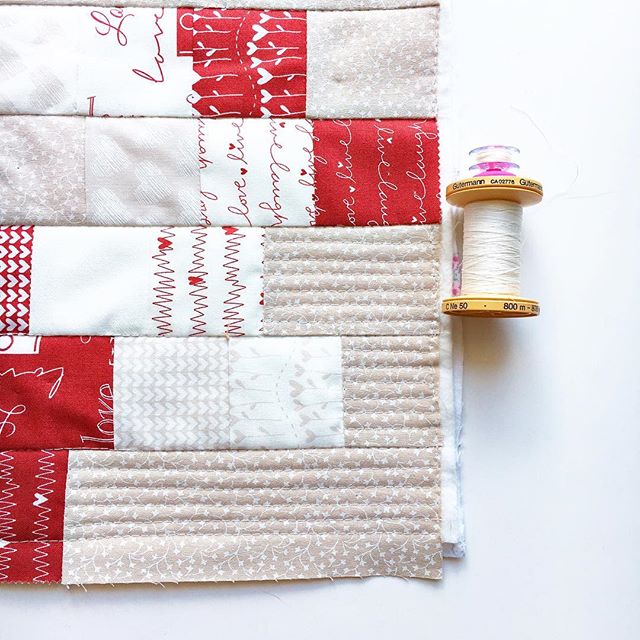
Finishing the Slipcase
Once your quilting is all done, fold the whole cover with right sides together and join the seam to create a tube that fits over your computer. I also used my overlocker (serger) on this seam to stop it fraying. You could alternatively zig zag the seam.
Turn through your tube and make sure it fits. If it is too loose, you can create a second seam just in from the first to make it slightly smaller. (If it is too small, oh no! Something must have been out in your measurements! Never fear. Unpick the join then go back and add some extra fabric and batting to make your whole case a little longer before you join the seam again.)
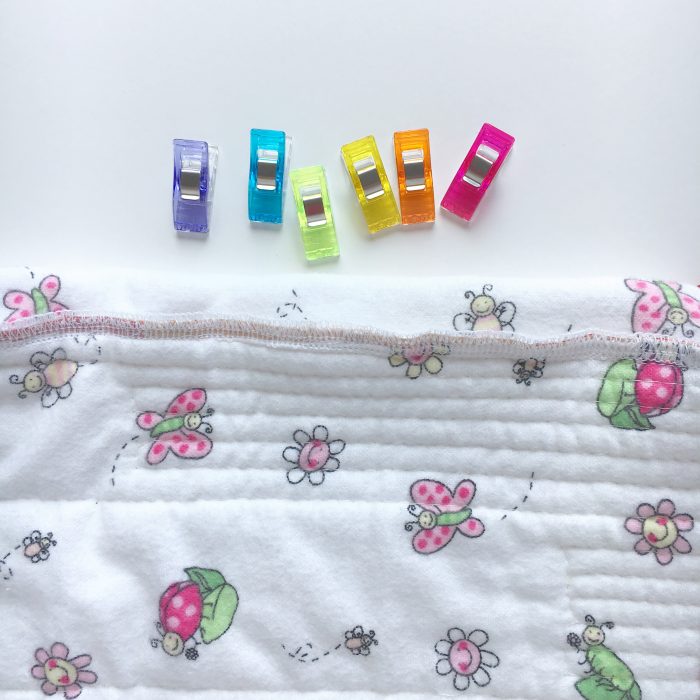
Finally, add binding to each end of the tube to cover the raw edges and finish it nicely. I used the same method as I would for adding binding to a quilt. Read more about how to do that here – you won’t need to turn corners but this post also explains the binding basics.
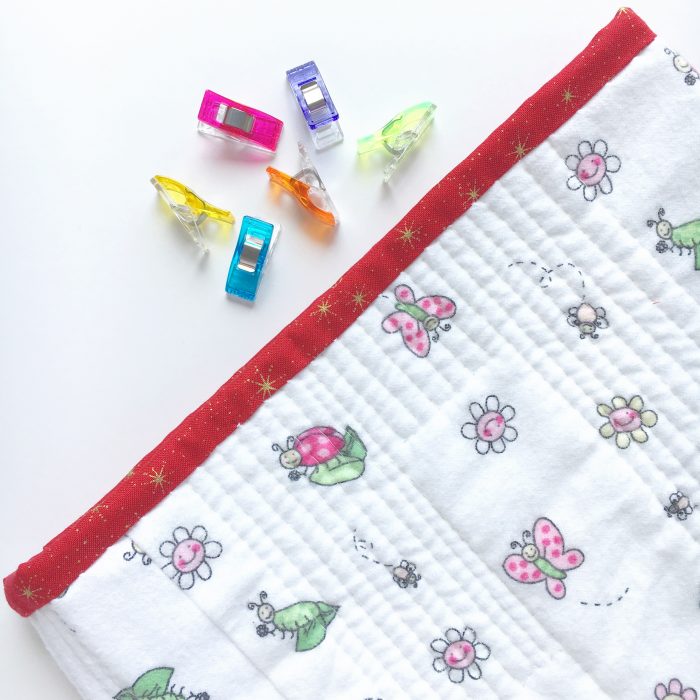
All done!
This slipcase also acts as a mat for my computer when I’m working. I sit it under my computer to protect my tabletop – and to protect my computer from dirt when I’m out and about.
My original slipcase also included a piece of wide elastic covered in a tube of fabric for wrap around the computer to hold it inside the case. I’ve found over the years that I don’t often use the elastic piece as I carry my laptop inside another bag, but if you’re concerned about the laptop sliding out of the case, just wrap a piece of 2″ elastic around the case to get the length and join the ends like a giant rubber band.
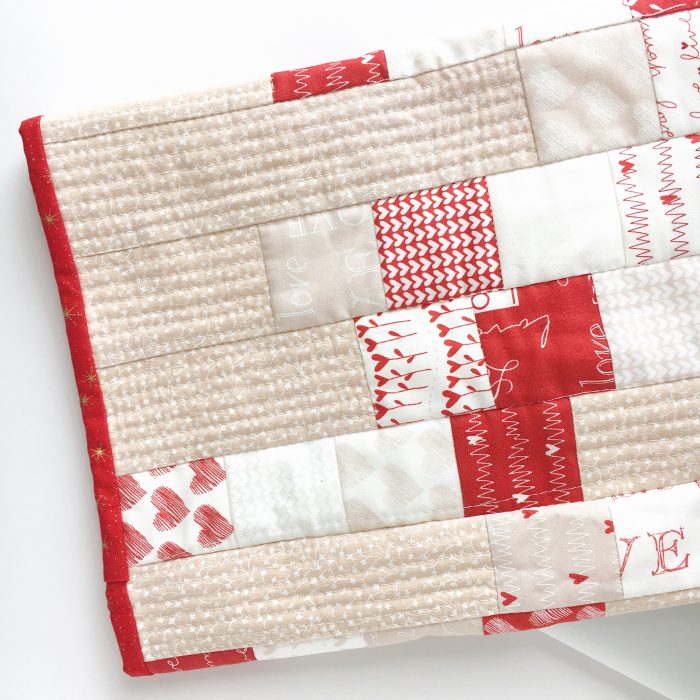
This would make a great gift for a friend or relative too.
More sewing gift ideas
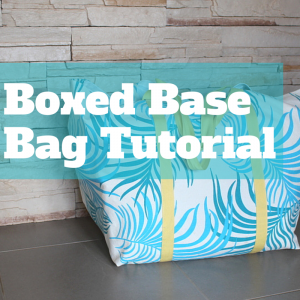
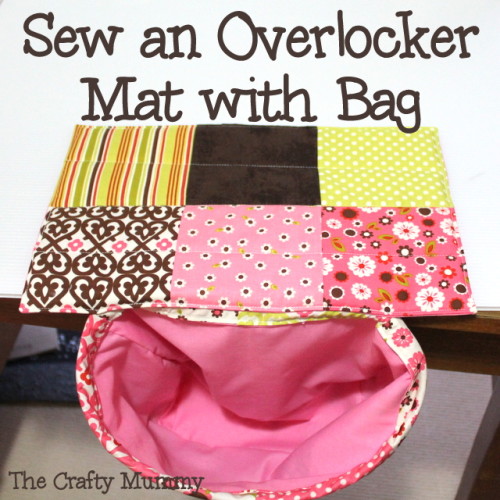
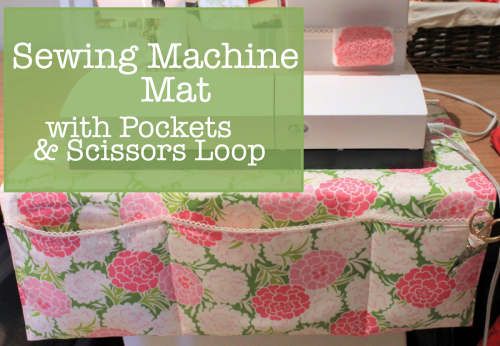
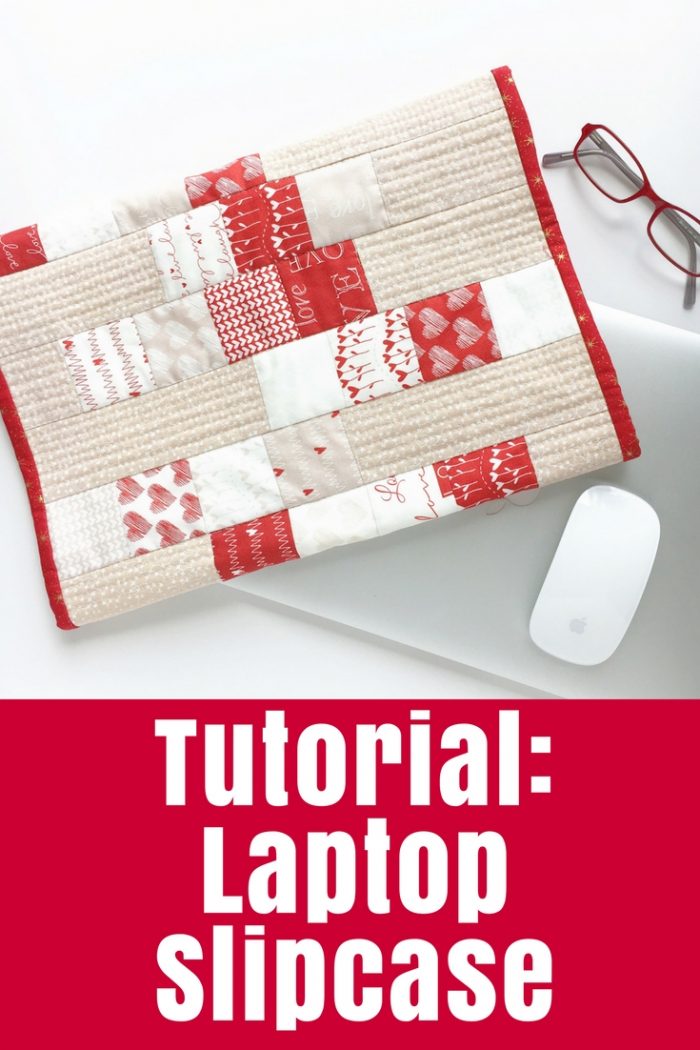
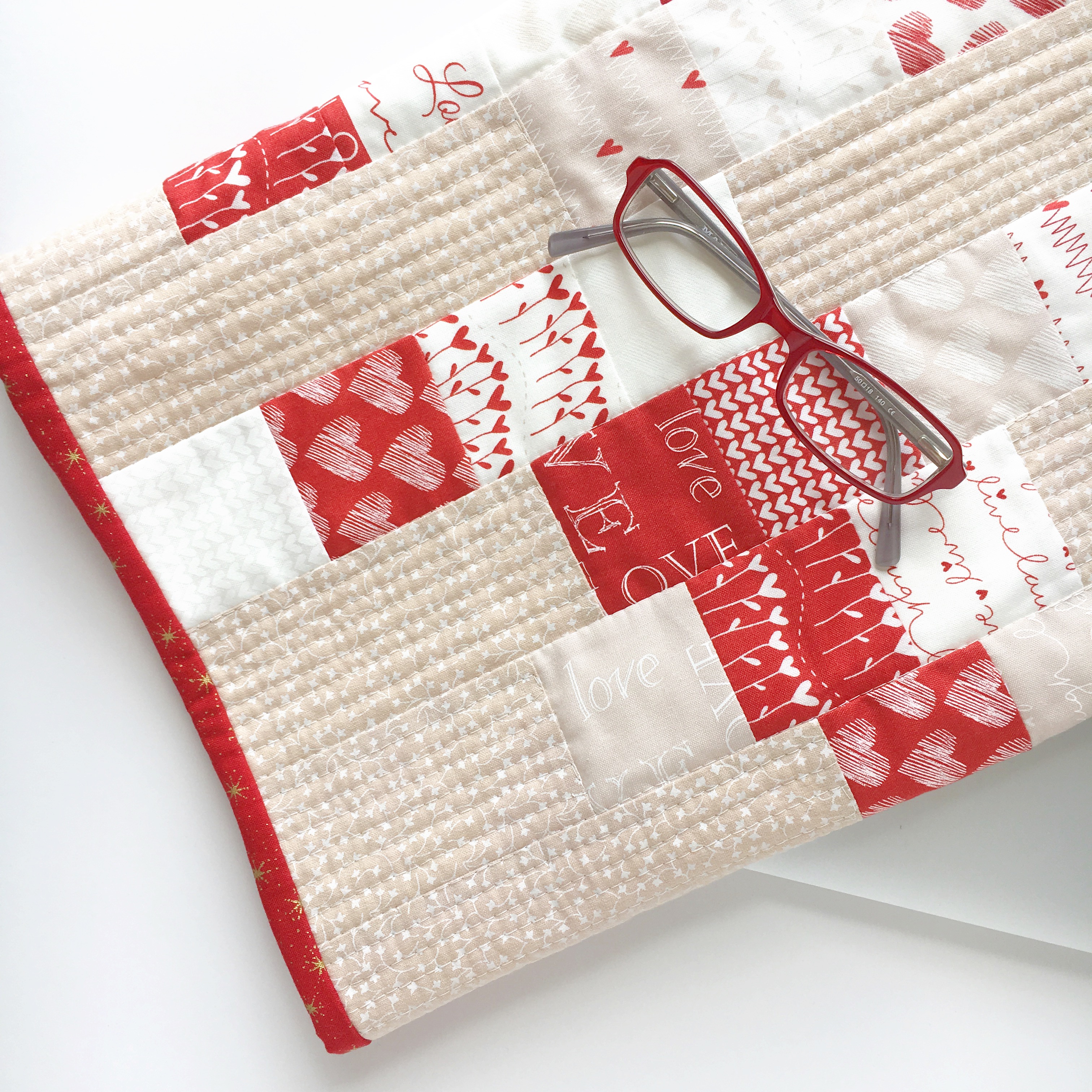
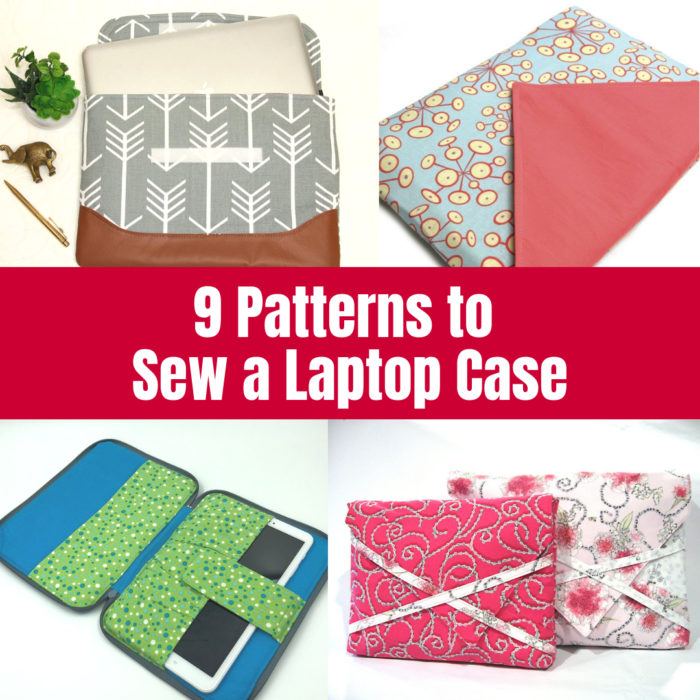


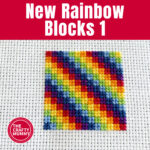



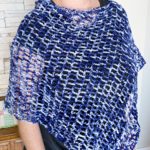
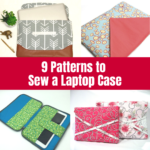

Thanks for the very comprehensive guide. I miss quilting. I wish I could make one as neat and as nice as yours!
Hi Tonya!
1st time visitor to your blog! This is a great idea, and just in time for Christmas too!!
A question: Do you think the materials would be too thick for a French seam at the end? What if I let the batting be 1/2″ shy of the end, or even 3/8″ so some of it gets caught? Thank you!
Patti.
Do you have printable pattern?
No I don’t have one. Most of projects are not made from patterns.
Love this thank you